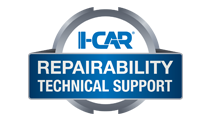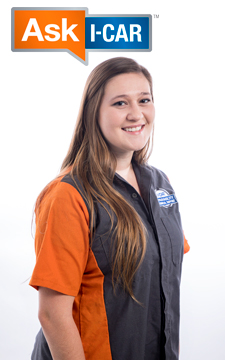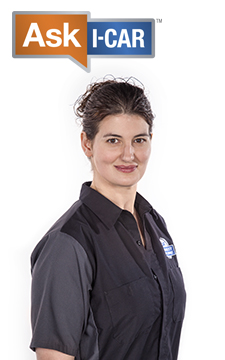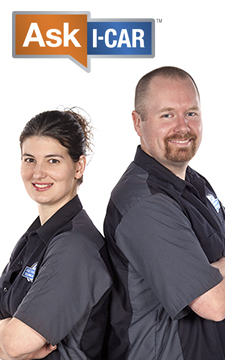OEM Restraints System Part Replacement Search
2011 Mercury Milan
Share:
|
DISABLE PROCEDURE AND TIME (Always Check Service Manual)
Warning! To avoid accidental deployment and possible personal injury, the backup power supply must be depleted before repairing or replacing any front or side air bag SRS components and before servicing, replacing, adjusting, or striking components near the front or side air bag sensors or RCM, such as doors, instrument panel, console, door latches, strikers, seats and hood latches. To deplete the backup power supply energy, disconnect the battery ground cable and wait at least one minute. Be sure to disconnect auxiliary batteries and power supplies (if equipped).1. Turn all vehicle accessories OFF.
2. Turn the ignition switch to OFF.
3. At the Smart Junction Box (SJB), located below the LH side of the instrument panel, remove the cover and the RCM fuse 32 (10A) from the SJB.
4. Turn the ignition ON and visually monitor the air bag indicator for at least 30 seconds. The air bag indicator will remain lit continuously (no flashing) if the correct RCM fuse has been removed. If the airbag indicator does not remain lit continuously, remove the correct RCM fuse before proceeding.
5. Turn the ignition OFF.
6. Disconnect the battery ground cable. Be sure to disconnect auxiliary batteries and power supplies (if equipped). Wait at least 1 minute.
REV: 09/2011
PARTS THAT MUST BE REPLACED FOLLOWING A DEPLOYMENT
When any deployable device or combination of devices have deployed and/or the Restraints Control Module (RCM) has DTC B1231/B1193:00 (Event Threshold Exceeded) in memory, the repair of the vehicle SRS is to include the removal of all deployed devices and the installation of new deployable devices, the removal and installation of new impact sensors and the removal and installation of a new RCM:Removal of all deployed devices and the installation of new deployable devices: [AIRBAG,STEERING WHEEL; AIRBAG,INSTRUMENT PNL; AIRBAG,FRONT SEAT; AIRBAG,ROOF]
Removal and installation of new impact sensors and the removal and installation of a new RCM: [AIRBAG SENSOR,FRONT; AIRBAG SENSOR,FRT DOOR; AIRBAG SENSOR,QTR PANEL; MODULE,AIRBAG CONTROL]
When the driver air bag module has deployed, a new clockspring must be installed.
If a side air bag deployment took place, a new seat backrest foam pad, backrest cover, side air bag module and nuts must be installed. The seat backrest frame should be
replaced if necessary.
Anytime the Safety Canopy® or side air curtain module has deployed, a new headliner and new A-, B• and C-pillar upper trim panels and attaching hardware must be installed.
New driver safety belt systems (including retractors, buckles and height adjusters) must be installed if the vehicle is involved in a collision that results in deployment of the driver safety belt pretensioners.
New front passenger safety belt systems (including retractors, buckles and height adjusters) must be installed if the vehicle is involved in a collision that results in deployment of the front passenger safety belt pretensioners.
PARTS THAT MUST BE INSPECTED AND REPLACED IF DAMAGED
When a vehicle has been involved in a collision and the Occupant Classification System Module (OCSM) has DTC B1231 stored in memory, the repair of the OCS system is to include the following procedures for the specified system:• For rail-type OCS system, inspect the passenger side floorpan for damage and repair as necessary. Install new OCS system rails.
• DTC must be cleared from the OCSM before carrying out Occupant Classification Sensor (OCS) System Reset. Do not install a new OCSM unless DTC B1231 cannot be cleared.
When any damage to the impact sensor mounting points or mounting hardware has occurred, repair or install new mounting points and mounting hardware as needed
Inspect the entire vehicle for damage, including the following components:
• Steering column (deployable column if equipped)
• Instrument panel knee bolsters and mounting points
• Instrument panel braces and brackets
• Instrument panel and mounting points
• Seats and seat mounting points
• Safety belts, safety belt buckles and safety belt retractors
• SRS wiring, wiring harnesses and connectors
After a crash, the following safety belt components and attaching hardware must be inspected and tested to verify correct function:
• Retractors
• Buckles
• Child safety seat tether bracket assemblies
• Automatic locking retractor (ALR) feature for child safety seats (passenger seating positions only)
• Belt tension sensor (BTS) (if equipped)
• Front safety belt buckle support assemblies (slide bar) (if equipped)
• Safety belt shoulder belt height adjusters (if equipped)
Safety belt assembly attaching areas must be inspected. Damaged or distorted attaching areas must be restored to their original structural integrity and a new safety belt assembly with new attaching hardware must be installed.
Before installing a Safety Canopy® or side air curtain module, inspect the roofline for any damage. If necessary, the sheet metal must be reworked to its original condition and structural integrity.
After carrying out the review and inspection of the entire vehicle for damage, repair or install new components as needed
*This matrix does not currently contain all production vehicles sold in the United States. The contents were developed in cooperation with AudaExplore, a Solera company. The contents are based on the information available at the time of publication. Updates and additions will be posted as they become available. To ensure that you are using the most recent information, always refer to vehicle maker technical information.









